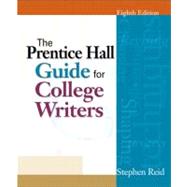
| Preface | |
| Credits | |
| Writing Myths and Rituals | |
| Writing Fitness: Rituals and Practice Place, Time, and Tools | |
| Energy and Attitude Keeping a Journal | |
| Warming Up: Journal Exercises On Keeping a Journal | |
| Situations, Purposes, and Processes for Writing | |
| Rhetorical Situations Writer, Occasion, Purpose, Audience, Genre, Context | |
| Purposes for Writing Writer-Based | |
| Purposes Subject- and Audience-Based | |
| Purposes Combinations of Purposes Subject, Purpose, and Thesis Purpose and Audience | |
| Audience Analysis Purpose, Audience, and Genre | |
| The Rhetorical Situation Purpose, Audience, and Context in Two Essays | |
| The Struggle to Be an All-American Girl | |
| I m OK, but You re Not | |
| Dimensions of the Writing Process Collecting, Shaping, Drafting, Revising | |
| The Whole Process Writing with a Computer Warming Up: Journal Exercises | |
| A Writing Process at Work: Collecting and Shaping Athletes and Education | |
| On Writing Athletes and Education | |
| A Writing Process at Work: Drafting and Revising From The Declaration of Independence | |
| Observing Techniques for Writing About Observations | |
| Observing People Observing Places From Sierra | |
| Observing Objects Warming Up: Journal Exercises Take This Fish and Look at It | |
| Observing Wolves | |
| Observing: The Writing Process | |
| Choosing a Subject Collecting, Shaping, Drafting, Revising Peer Response Postscript on the Writing | |
| Process Permanent Tracings | |
| Empty Windows | |
| Remembering Techniques for Writing About Memories Remembering | |
| People Remembering | |
| Places Remembering | |
| Events Warming Up: Journal Exercises Lives on the Boundary | |
| Beauty: When the Other Dancer Is the Self | |
| C sar Ch vez Saved My Life | |
| Remembering: The Writing Process Choosing a Subject Collecting, Shaping, Drafting, Revising | |
| Peer Response Postscript on the Writing | |
| Process The Wind Catcher | |
| The Red Chevy | |
| Reading Techniques for Writing about Reading | |
| Critical Reading | |
| Strategies Guidelines for Class Discussion | |
| Summarizing and Responding to an Essay | |
| Teach Diversity with a Smile | |
| Summarizing Responding Warming Up: Journal Exercises Letter to America | |
| Atwood Vows | |
| Responses to the Intergovernmental Panel on Climate Change | |
| Reading and Writing Processes Choosing a Subject | |
| Teaching Tolerance in America | |
| Collecting, Shaping, Drafting, Revising Avoiding Plagiarism Peer | |
| Response Postscript on the Writing Process Letter to Margaret Atwood | |
| Two Responses to Deborah Tannen | |
| Analyzing & Designing Visuals | |
| Techniques for Analyzing Visuals | |
| Analyzing Visuals with Text | |
| Analyzing Visuals in Context Progress or Not | |
| Flag Raising on Iwo Jima, February 23, 1945 | |
| Who s a Looter? | |
| Analyzing the Genre of the Visual Rhetorical | |
| Appeals to the Audience Designing Visuals | |
| Techniques for Designing Visuals | |
| Table of Contents provided by Publisher. All Rights Reserved. |
The New copy of this book will include any supplemental materials advertised. Please check the title of the book to determine if it should include any access cards, study guides, lab manuals, CDs, etc.
The Used, Rental and eBook copies of this book are not guaranteed to include any supplemental materials. Typically, only the book itself is included. This is true even if the title states it includes any access cards, study guides, lab manuals, CDs, etc.